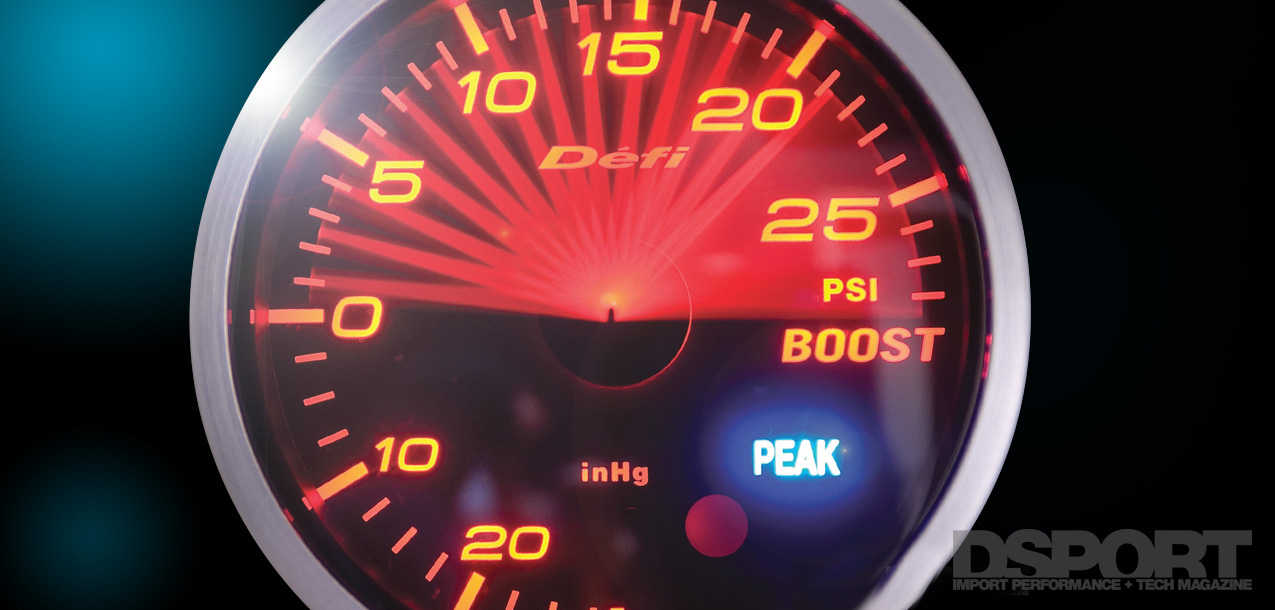Spring Choice
[pullquote]SPRING SELECTION GOES HAND IN HAND WITH THE MAXIMUM BOOST PRESSURE YOU CAN RUN ON THE WORST FUEL THAT YOU’LL BE USING[/pullquote]The best spring choice is the one that will be at or slightly below the minimum amount of boost pressure you desire for your engine and/or vehicle combination. As far as the engine goes, spring selection goes hand in hand with the maximum boost pressure you can run on the worst fuel that you’ll be using. If you are planning to run a multitude of different octane fuels at different boost pressures, choose a spring for the lowest-octane fuel and boost level the engine will experience. Let’s say that you run 91-octane pump gas at 17 psi of boost pressure and Q16 race gas at 28 psi of boost pressure. Under these circumstances, the ideal spring would be rated to generate 15 to 17 psi of boost pressure. If you have a racing engine that will always run on high-octane fuel—for example, E85—you should choose a spring that is very close to your target peak boost pressure level (if that selection is available). Based on engine considerations alone, choosing a lower rate spring may reduce boost response and may also prevent you from reaching your target peak boost, regardless of the type of boost controller used. Of course, the vehicle and intended usage also plays a roll in spring selection.
Since four-wheel-drive (FWD) vehicles have limited traction, you will want to select a lower rated spring or actuator which allows the boost pressure to be turned down to the level where traction can still be maintained. While the engine might be able to tolerate a boost pressure of 17 psi on pump gas, the available traction may only allow the power produced from 10 psi of boost pressure before wheelspin occurs. Hence, a spring that would produce a boost pressure of 8 to 10 psi would be best for this selection.
On an all-wheel-drive (AWD) vehicle, a surplus of available traction may mean that spring selection will solely be based on the boost levels that the engine will support and the fuel being used. Similar to FWD applications, RWD vehicles will also need to select a wastegate or actuator that allows the boost pressure to be turned down to a level where traction can still be maintained. However, most RWD vehicles will have superior traction capabilities and, thus, higher minimum boost levels.
SHOULD YOU BE USING A 4-PORT BOOST CONTROL SOLENOID? |
||
|---|---|---|
| The four-port candidates (must be using dual-port actuators and wastegates) | ||
| The Wide Ranger: Someone needing to run a wide range of boost levels |
|
|
| Quick Draw: Someone looking for maximum boost response |
|
|
| Control Freak: Someone looking for maximum control |
|
|
| The Overacheiver: Someone already running the highest rated wastegate spring, but still needing to reach higher boost levels. |
|
|
The Two-Port Solenoid
All boost-control solenoids, regardless of the number of ports, are simply electronically switched valves. Putting a 12-volt signal to the solenoid opens the valve inside the solenoid, and removing the voltage closes the valve. Most boost-control solenoids are operated by a Pulse Width Modulated (PWM)-strategy at a frequency of around 30 hertz (30 times per second). Operating at that frequency means that at every 3.3 hundredths (1/30) of a second, a 12-volt signal to open the solenoid’s valve may or may not be sent. When each signal is sent it, its duration will be 1/30 of a second. When the duty cycle to control the solenoid is set to zero percent, no 12-volt signal is sent during any of the 30 windows during that second. When the duty cycle is set to 10 percent, three 12-volt signals will be sent every 1/3 of a second. A 20 percent duty cycle will cause a 12-volt signal to be sent every 1/6 of a second. A 50 percent duty cycle will cause a 12-volt signal to be sent every 1/15 of a second, while at 100 percent, the signal is sent during all 30 windows.
A two-port solenoid is a device that’s best used on your windshield washer system instead of your boost control system. Most two-port solenoid configurations are used with single-port actuators on internally wastegated turbochargers. The two-port solenoid is usually installed so that one port is connected to a “T” in the single line going between the wastegate and boost signal source. The other port is not connected and simply vents to atmosphere. When the two-port solenoid is opened, some of the boost signal that would normally be “seen” by the wastegate is bled off. This has the effect of making the wastegate think that the boost pressure is less than actual, tricking the wastegate into delaying its opening until a higher boost is realized.


